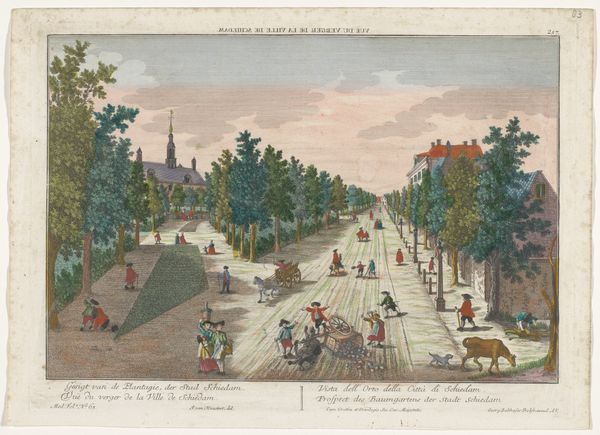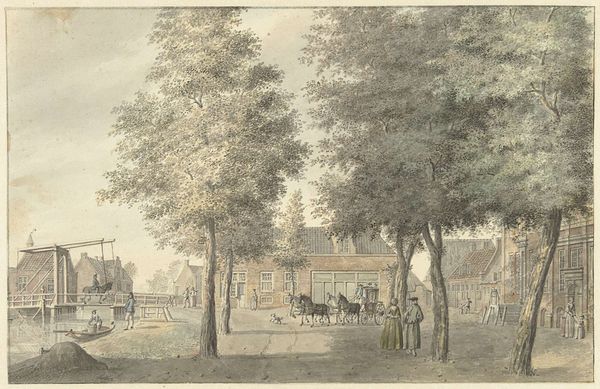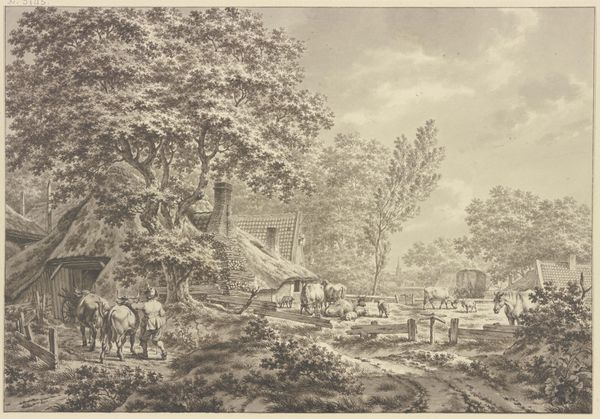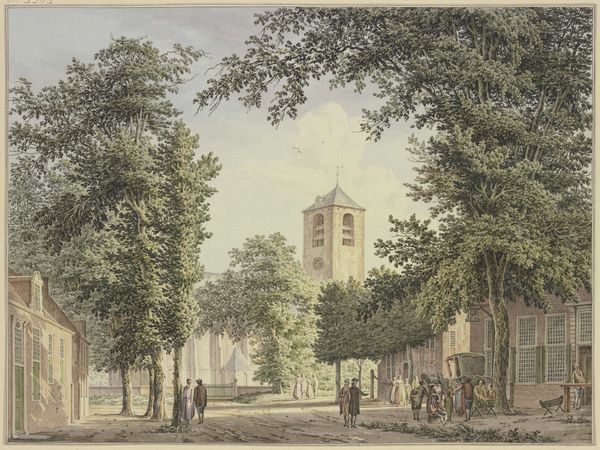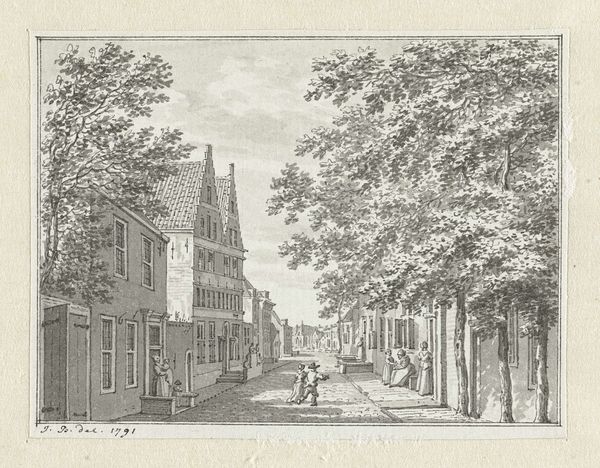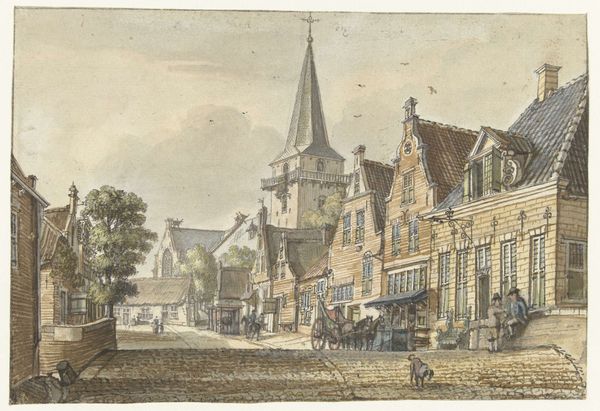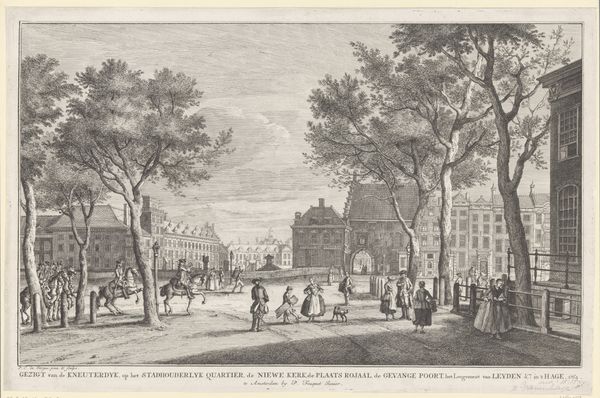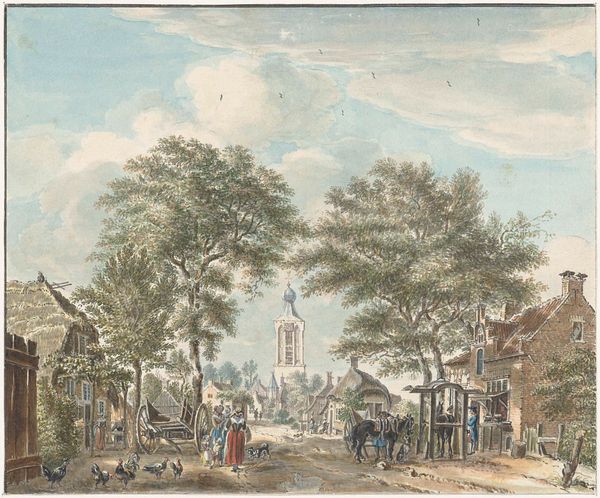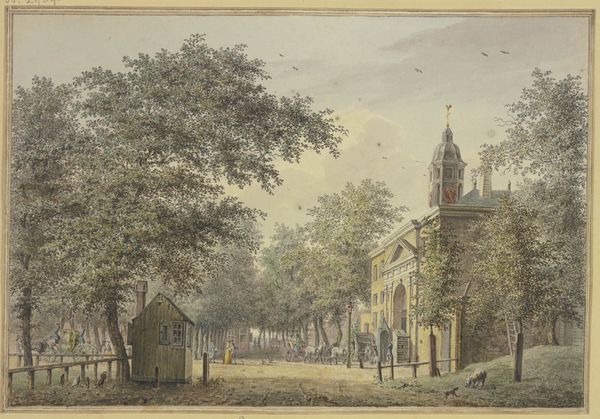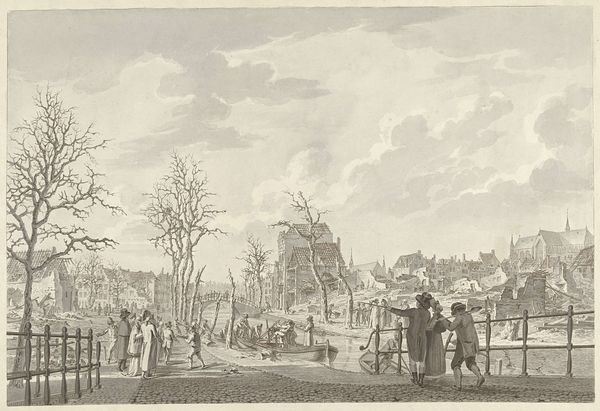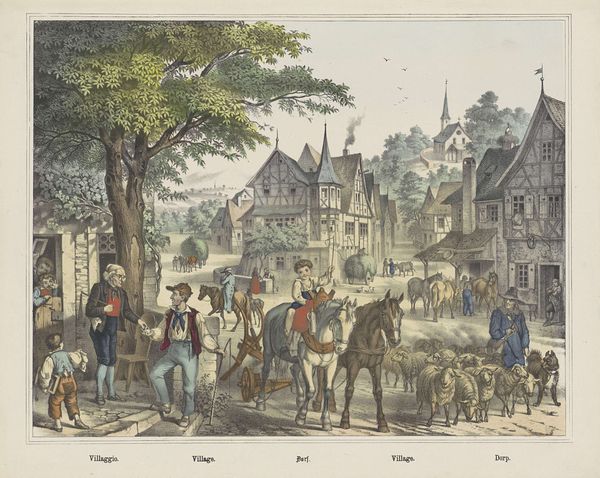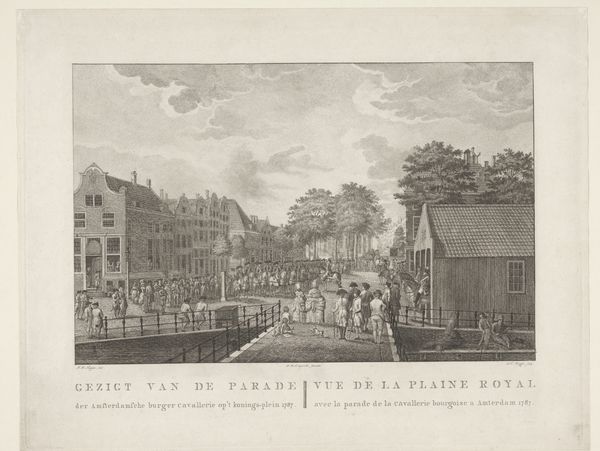
mixed-media, painting, plein-air, oil-paint, watercolor
#
mixed-media
#
painting
#
plein-air
#
oil-paint
#
landscape
#
watercolor
#
forest
#
group-portraits
#
romanticism
#
park
#
cityscape
#
genre-painting
Dimensions: height 234 mm, width 348 mm
Copyright: Rijks Museum: Open Domain
Editor: This is Hendrik Gerrit ten Cate’s "Festival in de Haarlemmer Hout," created in 1832. It seems to be a mixed-media piece, with watercolor and oil paint used, giving it a detailed yet soft quality. It shows a festive gathering in what looks like a park. What do you see in this piece, especially concerning its historical context? Curator: This image gives us a fascinating glimpse into the constructed nature of public life in the Netherlands during the 1830s. It's not just about a 'festival'; it’s about how national identity was being actively shaped through public gatherings. Note the flag; how might its presence shape this event? Editor: That's interesting. I hadn’t thought about it as actively shaping national identity. The flag... it certainly centers the gathering around something bigger than just a casual party. But was that always the goal? Curator: Precisely! Consider the political climate of the time. The Dutch kingdom had only recently been established after the Napoleonic era. Paintings like this actively participated in solidifying a shared national narrative and the monarchy's importance, showcasing what an ideal image of civic participation should look like. The seemingly innocuous "genre painting" then takes on a powerful public function, normalizing the new sociopolitical landscape. Editor: So, even the landscape genre can carry a political message. The figures now seem less like individuals and more like carefully arranged components of this constructed image. The performance on stage, the placement of families… It all speaks to the public role art played at the time. Curator: Exactly! It prompts us to question whose version of history is being represented, and for what purpose. What is included, and what is purposefully left out? What details of daily life would reveal the gaps between this constructed ideal and the reality? These paintings offer us a romanticized view that obscures potential tensions of that time. Editor: It’s a whole new way to understand it! I never realized a simple "festival" scene could hold so much meaning and intention. It makes me want to dig deeper into the artist's motivations and the broader cultural landscape of that era. Curator: Indeed. Looking at art this way invites us to see beyond the surface, question the narratives they present, and think critically about their role in shaping our understanding of history.
Comments
No comments
Be the first to comment and join the conversation on the ultimate creative platform.

